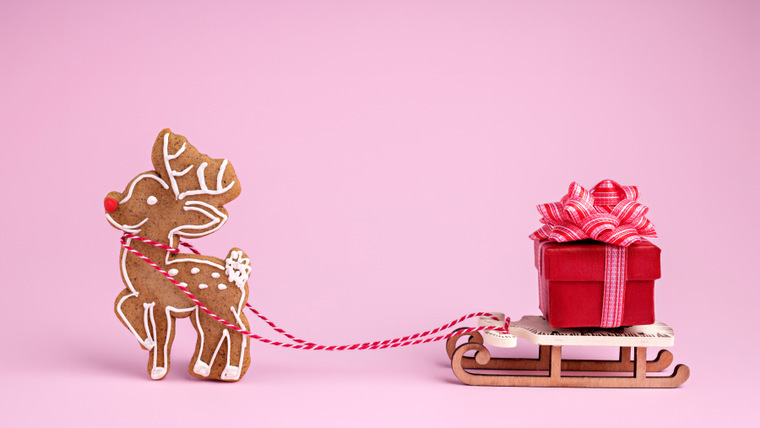Event planning is a daunting and time consuming task. When it comes to corporate events, no matter how much ground you think you’ve covered there’s always more to do.
The go-to method for most businesses is to think big and plan grand marketing campaigns. But biting off more than you can chew is a bad idea. If you break things down into smaller manageable chunks, your small business will have a more effective and manageable marketing strategy.
Pamela Slim gives a lot of easy tips and tricks in her Tiny Marketing Actions guide. We will go through everything you need to know about Tiny Marketing Actions in this blog post. Once you’re done with the article, you’ll be in the right headspace to plan and market your event to success.
For starters, your event should be divided into two phases:
- Phase 1: Planning the event
- Phase 2: Marketing the event
Both ends of the process are equally important. And breaking it down into steps helps it from becoming too overwhelming. Baby steps!
Phase 1: Planning the event
Reach out to your PB&J’s
No, we’re not talking about sandwiches. Your PB&J partners are people who have sticky ideas (the way peanut butter sticks to jelly). If you surround yourself with bright people and exciting ideas, it will naturally rub off on you.
In your event planning world, there will be dozens of complementary businesses, like florists, photographers, and even design firms. Schedule a catch up session with one of these partners and ask them 3 questions that will get the ball rolling:
- Who is your ideal client these days?
- What is your preferred way to receive referrals?
- Is there any kind of client you do not want to work with?
Once you get their answer, discuss your own too. Get some insight, build some relationships, and create a valuable referral network.
2) Retarget your loyal customers
A customer for life is always better than a series of different customers over the course of time. Why? This customer will feel valued and important, and their level of trust will spread a much more reliable marketing campaign i.e. word of mouth.
When planning an event, always reach out to old clients and ask them for feedback and suggestions. Open a channel of communication that goes both ways. Add an exclusive segment to your event for loyal customers – they do so much for you, let them feel appreciated in return.
3) Appreciate your favorites on LinkedIn
People say playing favorites is bad but maybe you can do it once in a while. If you have had a great experience working with someone, why not tell them?
Professional relationships thrive off of referrals. Recall the details of your experience with your favorite partners and write a generous recommendation for them on LinkedIn. Customers need to trust your partners just as much as they trust you. Plus, LinkedIn makes it super easy to write back a recommendation. A gentle reminder to your partners that you’re still here and you’re still just as great to work with. It’s important to find new ways to stay top of mind.
4) Write a pillar post
Constant promotional content can get a little exhausting to look at. If you want to keep your audience engaged, you have to add value to their lives. Evaluate key questions that your customers have and write an informative blog post to address all these concerns.
When your audience sees that you’re acting on their feedback and keeping them in the loop, they are likely to trust you more with their event planning. Just make sure your blog post is engaging and easy to understand. No one likes reading something that only increases their confusion. Here are some things to keep in mind while writing your pillar post:
- Pick a topic that isn’t too generic
- Write a strong call to action
- Research and use relevant keywords
- Add pictures, videos, and real life references
5) Keep it visual!
Your event may be a great experience, but if your marketing material isn’t pretty to look at, it will give the wrong message. A sense of aesthetic gives a lot of credibility to your work. A well designed flyer may instantly make you more professional and reliable, so why take the risk of slacking off here?
Instead of hiring graphic designers to design multiple variations of the same thing from scratch, you can save time and resources by using online templates.
PosterMyWall’s template library is full of thousands of professional templates, easy to customize, and ready to go. Outsource your heavy lifting to us.
Use your branded marketing materials to:
- Create social media marketing content
- Design infographics for blog post content
- Create visuals for email campaigns, online ads and seasonal campaigns
6) Highlight your success stories
Remember how we said referrals are important? Your past successes can also serve as a testimonial of sorts, encouraging people to trust you even more.
If you have pulled off events in the past, then don’t let their hype die down. Use them as a marketing tool. Create highlight videos and post them on your social media channels – TikTok and Instagram for sure.
Post updates about your journey and progress. This helps people empathize with your hard work. Behind-the-scenes videos, celebrating little milestones like hitting 1000 followers or 100 registrations… talk about them!
7) Online booking is a necessity not a bonus
If you think that online registration is not an absolute must-have for planning any event, then we’re here to tell you otherwise. Going to buy tickets in-person is so 10-years-ago. It’s easier to track, faster, more streamlined, and honestly just a million times better than waiting in line.
Reach out to a few online ticketing platforms and work in collaboration with them so you don’t lose out on your audience. Everything is online now. Keep up!
Download the Tiny Marketing Actions event planner workbook here:
Phase 2: Marketing the event
1) Make a PB&J boost circle
You need to stick to your partners with sticky ideas. Start discussions with other businesses that offer complementary services (but aren’t direct competitors to you). Ask 3 questions that will help you understand one another on a better level:
- Who is your ideal audience these days?
- What events or promotions do you have coming up?
- Would you consider forming a “boost circle” to cross-promote each others’ event posts?
The point is to form alliances with businesses that already know your ideal audience. Form a “boost circle” with these partners and agree to promote each other’s events/products on your own social media accounts.
In this arrangement, everyone ends up in a better off position – and you reach multiple different audiences at the same time. To streamline things, create event milestones on the Content Planner and plan out content to post in the form of social media posts and emails. Gradually you’ll witness both event attendance and social media followers increasing side by side.
2) List your event on local directories
Communities tend to have a handful of companies dedicated to driving traffic to the events in their neighborhood. Be it a visitor bureau or a city directory, you need to list your event on these platforms.
Make sure you have finalized all the important details like the venue, dates, guidelines, timing, and contact information. Then add your event to the listing as soon as you can. You also need to be mindful that new directories pop up every now and then so you may want to look for new platforms on a monthly basis. It’s best to stay one step ahead!
Creating an event update on Facebook is also a great way to quickly appear on everyone’s social radar.
3) Create exclusivity for registered attendees
There are always ways to make exclusive segments in your event. If people are willing to pay extra for a premium experience, why not give it to them?
Creating different levels to your event lets you target different audiences at the same time. For example, Taylor Swift’s Eras Tour shows had 6 different tiers within the VIP category! The most expensive package included a reserved seated ticket, a special set of four prints, and exclusive VIP merchandise (such as bags, pins, stickers, souvenir concert tickets and much more).
In the same way, you can offer better seating and service, maybe even hand out free merch. Segments like a pre-show meet and greet with VIPs or product giveaways can hugely increase registrations and interest. It will get people talking and that’s exactly what you want.
Exclusivity will encourage people to post about their experience even more, and that means more hype!
4) Create an event related contest
Give people the incentive to win a prize and watch your engagement shoot up! Competitions are always a fun way to encourage interest – who doesn’t like winning?
There are a bunch of ideas to choose from. Social media sharing competitions, photo or video submissions, or even just lucky draws. These methods increase online hype, word-of-mouth promotion, and generally helps create a fanbase. Remember to keep it fun and easy, to get as many entries as possible.
5) Posters and flyers that paint a picture
Whether your posters are digital or physical, they need to be eye-catching. Not only should it make the viewer stop and read, but it should also have complete information. It’s always a good idea to add a scannable QR code for people on the go to quickly snap a picture of.
Instead of designing multiple options from scratch you can save time by skimming through event flyer templates on PosterMyWall. With thousands of designs to choose from you can select a template that matches your aesthetic and add customizations wherever necessary. Especially when you have to create variants for different audiences… go easy on yourself. Use a template wherever you can.


6) Collaborate with local influencers
Influencer marketing needs to be handled strategically. You can’t pick out any random person with a huge social media following, it’s not that simple.
To market an event it helps to focus on influencers from within the local community. Then not only can they talk about the event, but also show up to attend it (and bring their followers with them!). You can introduce personalized discount codes specific to each influencer you onboard. This helps track progress and incentivizes their followers to register.
Most importantly, make sure your influencer’s target audience matches your event’s target audience. It’s only useful if you reach people who are actually interested in the event itself.
Influencers don’t just need to be on Instagram. Cover all your bases with people from TikTok, Twitter, YouTube, and even Facebook. Make a catchy and memorable hashtag for the event and start posting!
Download the Tiny Marketing Actions event promotion workbook here:
Wrapping it up
Organizing an event is no child’s play. It may be a bit too much for an adult too (and that’s okay). Taking it one step at a time will make it easier to handle, and more fun to manage. Set small achievable goals with one ultimate milestone, but make sure all your decisions are well-informed ones.
For more detailed event marketing strategies, you can dive right into the Small Marketing Actions guidebook yourself! For more blog posts on event planning and marketing:
- Going viral: Hook Gen Z with these marketing strategies
- 5 influencer marketing tips for boosting publicity and sales
- Put together a solid market research strategy with these 5 tips
Anoosha is a digital marketer and content writer at PosterMyWall. From writing to painting and everything in between, she loves experimenting with creative work. In her free time Anoosha works on her fashion and lifestyle blog!









